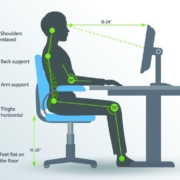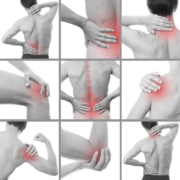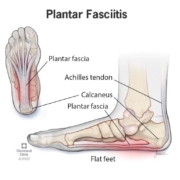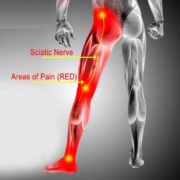7 Smart Strategies to Prevent Carpal Tunnel Syndrome
In our fast-paced digital world, where typing and screen time dominate our daily routines, the risk of developing Carpal Tunnel Syndrome (CTS) looms larger than ever. This common condition, characterized by pain, numbness, and tingling in the hands and wrists, can significantly impact your productivity and quality of life. But fear not! In this listicle, we’ve compiled 7 smart strategies that can help you safeguard your wrists and keep CTS at bay. From ergonomic adjustments to mindful habits, each strategy is designed to empower you with practical tools and insights that promote wrist health. Whether you’re a seasoned professional or a casual computer user, these tips will equip you to take proactive steps in preventing discomfort and ensuring your hands remain pain-free. So, let’s dive in and discover how you can protect your most valuable tools – your hands!
1) Maintain Proper Ergonomics: Adjust your workstation to ensure that your keyboard and mouse are at elbow height, and your wrists remain straight while typing. This simple adjustment can significantly reduce strain on your wrists
Creating a workspace that promotes comfort is essential for anyone who spends long hours typing or using a mouse. Start by positioning your keyboard and mouse at a height that allows your elbows to remain at a 90-degree angle. This adjustment ensures that your wrists are straight, minimizing the risk of strain. Consider using an adjustable chair and a desk that accommodates your height. This setup not only enhances your posture but also contributes to a more productive work environment.
In addition to adjusting your workstation, incorporating supportive accessories can further enhance your ergonomic setup. Here are some items to consider:
- Wrist Rests: These provide cushioning and support, keeping your wrists in a neutral position.
- Ergonomic Keyboards: Designed to reduce strain, these keyboards often feature a split layout.
- Mouse Pads with Gel Support: These help to maintain wrist alignment and comfort during prolonged use.
2) Take Frequent Breaks: Implement the 20-20-20 rule—every 20 minutes, take a 20-second break to look at something 20 feet away. Use this time to stretch your fingers and wrists to alleviate tension
In the digital age, it’s all too easy to lose track of time while working on a computer. To combat the strain that prolonged screen time can cause, adopting the 20-20-20 rule is essential. Every 20 minutes, take a brief 20-second pause to shift your focus to something at least 20 feet away. This simple act not only helps to reduce eye strain but also serves as a reminder to reset your posture and relieve tension in your hands and wrists. During these short breaks, consider incorporating some gentle stretches to enhance circulation and flexibility.
Utilizing your break time effectively can make a significant difference in your overall well-being. Here are some quick stretches you can do during your 20-second breaks:
- Finger Flexes: Open and close your hands several times.
- Wrist Rolls: Rotate your wrists in circles, both clockwise and counterclockwise.
- Arm Stretches: Extend your arms overhead and lean to each side to stretch your sides.
- Neck Rolls: Gently roll your head from side to side to relieve neck tension.
3) Strengthen Your Hands: Engage in hand exercises to build strength and flexibility. Simple activities like squeezing a stress ball or using resistance bands can enhance muscle endurance and reduce the risk of injury
Building strength and flexibility in your hands is crucial for preventing carpal tunnel syndrome. Engaging in regular hand exercises can significantly enhance muscle endurance and reduce the risk of injury. Consider incorporating the following activities into your routine:
- Squeezing a Stress Ball: This simple exercise helps to strengthen the muscles in your hands and forearms. Aim for 10-15 squeezes, holding each for a few seconds.
- Resistance Band Exercises: Using a resistance band, you can perform various movements that target different muscle groups in your hands and wrists. Try finger extensions and wrist curls for a comprehensive workout.
- Finger Taps: Tap each finger to your thumb in succession. This exercise improves dexterity and flexibility while promoting blood circulation.
Incorporating these exercises into your daily routine can lead to noticeable improvements in hand strength. For a structured approach, consider tracking your progress with a simple table:
| Exercise | Repetitions | Frequency |
|---|---|---|
| Squeeze Stress Ball | 10-15 squeezes | 3 times a week |
| Resistance Band Finger Extensions | 10 repetitions | 4 times a week |
| Finger Taps | 10 taps per finger | Daily |
By consistently practicing these exercises, you can create a strong foundation for your hands, making them more resilient to the strains of daily activities. Remember, prevention is key, and a little effort can go a long way in safeguarding your hand health.
4) Optimize Your Grip: Use tools and devices designed for comfort, such as ergonomic keyboards and mice. These products can help maintain a natural hand position and minimize the strain associated with prolonged use
To enhance your comfort during long hours of typing or mouse usage, consider investing in ergonomic keyboards and mice. These specially designed tools promote a more natural hand position, reducing the risk of strain on your wrists and fingers. Ergonomic keyboards often feature a split design that allows your hands to rest in a more relaxed posture, while ergonomic mice are shaped to fit the contours of your hand, preventing awkward angles that can lead to discomfort. By choosing the right tools, you can create a workspace that supports your body’s natural alignment and minimizes fatigue.
Additionally, incorporating wrist supports and palm rests can further enhance your setup. These accessories provide cushioning and help maintain a neutral wrist position, which is crucial for preventing repetitive strain injuries. When selecting these products, look for ones that are adjustable and made from breathable materials to ensure maximum comfort during extended use. Remember, the right combination of ergonomic devices not only helps in maintaining productivity but also plays a significant role in safeguarding your hands from potential injuries.
5) Stay Mindful of Posture: Good posture goes a long way in preventing carpal tunnel syndrome. Keep your back straight and shoulders relaxed while sitting, as this can help maintain proper wrist alignment
Maintaining good posture is not just about looking confident; it plays a crucial role in your overall health, particularly in preventing conditions like carpal tunnel syndrome. When you sit, ensure your back is straight and your shoulders are relaxed. This alignment helps keep your wrists in a natural position, reducing strain on the nerves that can lead to discomfort and pain. Consider using ergonomic furniture that promotes proper posture, such as chairs with lumbar support and desks at the right height. Making these adjustments can significantly lessen the risk of developing repetitive strain injuries.
In addition to your seating arrangement, pay attention to how you position your wrists while typing or using a mouse. Aim for a neutral wrist position, where your hands are level with your forearms. This can be achieved by utilizing wrist supports or ergonomic keyboards that encourage a more natural angle. Remember, small adjustments can yield significant benefits. Here’s a quick reference table to keep in mind:
| Posture Tips | Benefits |
|---|---|
| Sit with back straight | Reduces strain on neck and shoulders |
| Keep shoulders relaxed | Prevents tension buildup |
| Use ergonomic furniture | Supports proper alignment |
| Maintain neutral wrist position | Minimizes pressure on nerves |
6) Limit Repetitive Motions: Identify tasks that require repetitive wrist movements and find ways to modify them. Consider alternating tasks or using voice recognition software to reduce the strain on your hands and wrists
Repetitive wrist movements can be a significant contributor to the development of carpal tunnel syndrome. To combat this, it’s essential to identify tasks that require such motions in your daily routine. For example, if you spend hours typing or using a mouse, consider implementing a rotation system for your tasks. By alternating between different activities, you can give your wrists a much-needed break. Additionally, integrating ergonomic tools like wrist rests or adjustable keyboards can help minimize strain during repetitive actions.
Another innovative approach is to leverage technology to reduce reliance on manual input. Explore the use of voice recognition software for tasks that typically involve extensive typing. This not only lessens the physical toll on your wrists but can also enhance productivity. To further illustrate the impact of modifying repetitive tasks, consider the following table:
| Task | Modification | Benefit |
|---|---|---|
| Typing | Use voice-to-text software | Reduces wrist strain |
| Mouse Clicking | Switch to keyboard shortcuts | Minimizes repetitive motion |
| Data Entry | Rotate with manual tasks | Prevents fatigue |
7) Keep Your Hands Warm: Cold temperatures can exacerbate stiffness and discomfort in your wrists. Dress appropriately for the weather and consider using wrist warmers or gloves during colder months to keep your hands flexible
When the temperature drops, it’s important to pay attention to how it affects your wrists and hands. Cold weather can lead to increased stiffness and discomfort, making it essential to keep your hands warm and flexible. Consider investing in wrist warmers or fingerless gloves that allow for mobility while providing necessary insulation. These accessories can help maintain blood circulation, which is crucial for reducing the risk of developing carpal tunnel syndrome. Don’t underestimate the power of a cozy pair of gloves; they can make a significant difference during chilly months.
In addition to wearing protective gear, think about your overall outfit as well. Layering your clothing can help trap heat and keep your extremities warm. Here are some tips to ensure your hands stay toasty:
- Choose Insulated Fabrics: Opt for materials that retain heat effectively, such as fleece or wool.
- Wear Wrist Support: Consider wrist braces that provide warmth and support, especially if you spend long hours typing or using tools.
- Take Breaks: Regularly warm up your hands by taking breaks to stretch and move, promoting blood flow.
In Conclusion
As we wrap up our exploration of the seven smart strategies to prevent carpal tunnel syndrome, it’s clear that taking proactive steps can make a world of difference in maintaining your wrist health. By incorporating these practices into your daily routine—whether it’s adjusting your workspace, taking regular breaks, or strengthening your wrists—you can significantly reduce your risk of developing this condition. Remember, your hands are your tools for creativity, productivity, and connection. Prioritizing their well-being not only enhances your comfort but also empowers you to engage fully in the activities you love. So, take these insights to heart, and give your wrists the care they deserve. Here’s to a future of pain-free productivity and joyful movement!










Leave a Reply
Want to join the discussion?Feel free to contribute!